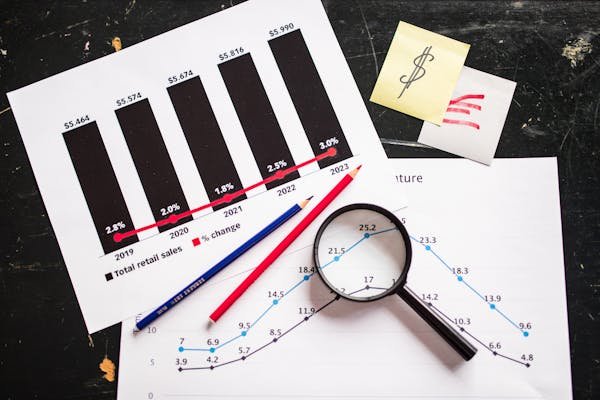Startups often face a silent killer—underpricing. It creeps in early, often from a place of fear, and lingers far too long. Most founders don’t even realize they’re underpricing until real growth stalls or cash starts burning faster than expected. This article unpacks what real founders have experienced, using actual data and honest reflections from the front lines.
1. 74% of early-stage SaaS founders admit they initially priced their product too low
Why underpricing happens more than we think
When you’re just starting out, it’s tempting to charge less. Maybe you think it’ll help you gain traction. Maybe you’re nervous about getting your first customer. Or maybe you’re just trying to compete. But three out of four early-stage SaaS founders admit they priced too low.
Pricing low feels safe. It reduces the fear of rejection. But that safety comes at a cost. You lose margin, you attract the wrong customers, and worse, you plant a seed of doubt—if it’s cheap, it must not be that good.
The real cost of pricing too low
What happens when your pricing is too low? You work harder for less money. Your team gets stretched thin. You miss out on hiring. You delay growth. And when you finally raise prices, the shift feels painful—for you and for your customers.
Founders often realize they’ve underpriced after seeing a competitor charge more for something similar—or even less powerful. That moment stings.
What to do instead
Start by calculating the true value you deliver. Talk to users. Find out what they would miss most if your product disappeared. That’s your value anchor. Now price based on that—not on fear.
Use this rule of thumb: If no one flinches at your price, it’s probably too low.
2. 61% of B2B startup founders say they underestimated their product’s value in the first year
Confidence isn’t just a mindset—it’s strategy
Most B2B founders don’t fully understand the value they offer early on. The result? They sell themselves short. In fact, over 60% underestimated what their product was worth during that first critical year.
This usually isn’t about humility. It’s a knowledge gap. When you’re building, it’s hard to see clearly what your product actually saves, solves, or simplifies for your customer.
The value gap problem
Many B2B founders focus on features instead of outcomes. But buyers pay for outcomes. If your product saves a customer five hours a week or prevents a $10,000 mistake, that’s value. And it’s measurable.
By focusing too much on what their tool does, and not enough on what it changes, founders miss pricing power.
How to fix it
Map your product’s value in real terms. Think time saved, cost avoided, or revenue gained. Use that to back into pricing.
Then test. Talk to 10 real users. Show them the outcomes. Ask what they’d pay. You’ll be surprised—most will suggest a number higher than your current price.
3. 58% of startups raise prices after realizing customers were willing to pay more
The hidden signal in customer behavior
Over half of all startups eventually raise their prices because they notice something simple: customers don’t hesitate. No pushback, no objections, no comparisons. That’s a sign.
It’s easy to miss at first. You’re happy just to close the deal. But over time, silence becomes a clue. If everyone says yes too quickly, you’re likely charging too little.
How to read the room
If customers pay without asking for a discount—or worse, if they tell you “this is a steal”—you have a pricing problem.
More founders realize this during renewals or upgrades. That’s when the lightbulb goes off. If they’re sticking around and using it daily, they’d likely pay more.
What to do next
Raise your price incrementally. Even a 10–20% lift can give you more runway and better positioning. Don’t apologize for it—explain the value. If customers are happy, they’ll stay.
And if a few churn? That’s fine. Price changes are a filter. Let it work.
4. 43% of underpricing decisions are made due to fear of customer churn
Fear is not a strategy
Nearly half of all underpricing decisions are made from fear—specifically, fear that raising prices will scare people off. It’s understandable, but it’s also a trap.
Fear-based pricing makes you reactive. You end up designing prices around your least confident customers instead of your ideal ones.
Why churn isn’t always bad
The truth is, churn is part of the process. If a customer leaves because of a price that reflects your product’s value, they probably weren’t a good fit anyway.
In fact, price-sensitive customers tend to churn more. They’re the ones who argue over every invoice and ask for discounts again and again.
Flip the mindset
Instead of fearing churn, focus on building value. Show what your product helps customers do better, faster, or cheaper. That’s your power.
Then set your pricing confidently. Not everyone will stay. That’s okay. The ones who do will be more aligned, more engaged, and more profitable.
5. Only 27% of founders perform detailed competitor price benchmarking before launch
Pricing without context is risky
Almost three-quarters of founders launch without seriously studying competitor pricing. That’s like opening a store without knowing what the shops next door charge. It leaves you guessing—and often guessing wrong.
Some founders think they’re creating a new category, so pricing benchmarks don’t apply. Others just don’t want to look. But ignoring the market doesn’t make it disappear.
What happens when you skip the homework
Without benchmarking, you risk two things: going too low and looking cheap, or going too high and getting ignored. Worse, you might misinterpret your own traction. A fast “yes” might mean you’re undercharging, not winning.
Competitor research gives you the baseline. It tells you what’s normal, what’s premium, and where you can stand out.
Make benchmarking part of your launch checklist
Pick five competitors. Study their plans. Talk to their users if you can. Find out what customers love and hate about their pricing. Then decide: do you want to match, undercut, or go above?
Once you know where the market stands, you can place yourself intentionally—not accidentally.
6. 68% of Y Combinator startups increased prices within 12 months of launch
Why even elite startups adjust pricing fast
Y Combinator startups are some of the most promising early-stage companies in the world. They have top-tier advisors, access to funding, and a direct line to growth best practices. Still, nearly 7 out of 10 increase their prices within the first year.
That says something loud and clear: even the best get pricing wrong at launch.
Launch pricing isn’t final—it’s a test
Your initial price is just your opening move. It doesn’t need to be perfect. What matters is that you treat it like an experiment.
Many founders feel stuck after launch. They worry about upsetting customers or breaking trust. But customers expect evolution. If your product improves and delivers more value, your price should follow.
Y Combinator startups move fast. They get data. They talk to users. And they raise prices when they see the gap between what they charge and what they’re worth.
What you can learn from them
Give yourself permission to change pricing within 6–12 months. Plan for it. Tell your team it’s part of the roadmap. That way, when feedback rolls in or you release new features, you can respond with confidence.
Even top-performing startups adjust. You can too.
7. Startups that underprice grow 33% slower in revenue year-over-year
Growth takes margin—and margin takes pricing discipline
Underpricing doesn’t just hurt your bottom line. It hurts your top line too. Startups that charge too little grow one-third slower than those with healthy pricing.
Why? Because pricing affects everything. Your ability to hire. Your ability to invest in marketing. Your ability to retain great talent. When revenue is thin, so is momentum.
The compounding effect of low prices
In the first few months, the impact might not seem dramatic. But over time, underpricing compounds. You need to close more customers to hit the same revenue goals. You burn out faster. And you may even rely too much on funding just to stay afloat.
Slow revenue growth also affects valuation. Investors notice. If your price is low, your revenue ceiling stays low too.
How to break the pattern
Run the math. Take your current price and raise it by 20%. Then project what that looks like in 6 months. Can you do more with that margin? Will it reduce your break-even point?
Don’t be afraid to test higher pricing on new customers. You can grandfather existing users and experiment with small segments.
Higher pricing isn’t greedy—it’s strategic.
8. 49% of underpriced startups reported higher-than-average support load due to misaligned customers
The wrong customers create the wrong problems
Nearly half of startups that priced too low said it led to more customer support issues. That’s not a coincidence. Pricing acts like a filter. When you charge less, you often attract customers who need more hand-holding, not less.
These users are price-sensitive, but they’re also high-maintenance. They may not be a fit for the product’s intended scope. And they often expect premium service on a bargain price.
When pricing leads to pain
Support overload drains your team. Engineers get pulled away from product work. Founders get stuck in tickets. And progress slows down.
All of that comes from a simple cause: your pricing pulled in the wrong crowd.
Use pricing as a positioning tool
If your product is meant for pros, price it that way. If it delivers huge value, signal that with your number. High-quality users want high-quality tools—and they’ll pay for them.
You’ll not only reduce support costs, you’ll build a more loyal base. Fewer tickets, fewer complaints, and more time to improve your product.
Pricing isn’t just about money—it’s about alignment.
9. 36% of founders say underpricing led to attracting the wrong customer segments
Pricing shapes your entire customer base
One in three founders admits that low pricing brought in the wrong users. These aren’t just hard-to-support customers—they’re mismatches. They don’t get your product. They don’t value it. And they often churn fast.
This becomes a cycle. You lower the price to get more traction. You attract more low-fit users. Then you spend time and resources trying to please them instead of building for your core audience.
The risk of building for the wrong crowd
When the wrong users become your loudest voice, they shape your roadmap. You build features to satisfy complaints, not strategy. Before long, your product loses focus.
Worse, you miss your ideal customers—the ones who would pay more and stay longer—because your brand feels too cheap or too broad.
How to regain control
Step back and ask: Who is our product really for? What is it worth to them? Then adjust your pricing to reflect that answer.
You may lose some customers—but you’ll gain the right ones. And over time, that shift changes everything: NPS, retention, revenue, and clarity.
Don’t just price to sell—price to attract the right people.
10. 71% of founders increased pricing after customer feedback suggested higher perceived value
Your users know when you’re undercharging
Most pricing feedback doesn’t come in the form of complaints. It comes as surprise: “This is cheaper than I expected” or “You should be charging more.”
Over 70% of founders eventually raise prices after hearing this kind of feedback. Why? Because it’s an honest signal that your product is doing more than you thought.
Perceived value matters more than feature lists
Users don’t care how many hours you spent building. They care about the change they experience. If they save time, win deals, or solve a headache—that’s value. And they notice.
When customers start volunteering that your product feels underpriced, they’re giving you permission to adjust. They’re even encouraging it.
What to do when you hear the signal
Don’t ignore it. Start planning your price increase immediately. Announce it clearly. Offer existing customers a chance to lock in current rates. Most will stay—and many will cheer you on.
Use this feedback to sharpen your messaging too. If people see high value, make sure your homepage and demo reflect that. Don’t let price be your only value cue.
Let perception and reality finally meet—at the right price point.
11. Only 14% of first-time founders felt confident in their pricing at launch
Pricing is often a blind spot for first-time founders
Most first-time founders focus on building the product, launching quickly, and acquiring users. Pricing tends to be an afterthought. It feels like guesswork—and that’s exactly how it’s treated.
Only 14% of first-time founders said they felt confident in their launch pricing. That means 86% either guessed, copied someone else, or chose a number just to get things moving.
This lack of pricing confidence isn’t just common—it’s dangerous.
Why pricing confidence matters
When you’re unsure about your pricing, you communicate that uncertainty. You apologize during sales calls. You hesitate to stand firm on value. You second-guess yourself when a customer pushes back.
And worst of all, you leave money on the table.
Confidence doesn’t come from bravado. It comes from clarity—clarity on what you offer, who it’s for, and what outcomes you deliver.

How to build pricing confidence
Talk to users before launch. Ask them how they currently solve the problem. What do they pay? What frustrates them? Then build your pricing to be an upgrade—not just a cheaper option.
Also, test your pricing with friends, mentors, and advisors. Don’t ask, “Is this fair?” Ask, “Would this make sense to someone like you if it solved X?”
Confidence follows preparation. Put in the work upfront, and you’ll launch with clarity instead of fear.
12. 57% of underpricing founders cited “lack of pricing expertise” as the primary reason
You’re not alone if pricing feels unfamiliar
Over half of founders who underpriced their product say they did it because they didn’t know better. They lacked the expertise. They weren’t taught how to price. No one showed them the frameworks. So, they guessed low.
And that’s the default. When people aren’t sure, they drop the price. It feels safer. It avoids rejection. But it’s the wrong move.
Why pricing isn’t intuitive
Most of us have never been taught to think about value-based pricing. We’ve only been taught to budget as consumers. That means we often think like buyers, not sellers.
But startup pricing isn’t about being affordable—it’s about being fair for the transformation you deliver.
Get smarter fast
You don’t need an MBA. But you do need structure. Read 2–3 of the top pricing books. Follow pricing experts on LinkedIn. Run mock sales conversations to see how pricing lands.
Better yet, talk to a few mentors who’ve launched products. Ask them what they learned. What they regret. What they would’ve charged on Day One.
You don’t have to guess. You just need to ask better questions and practice positioning your value.
13. 42% of startups that doubled prices saw no churn increase
The churn fear is overblown
Here’s something that surprises most founders: nearly half of the startups that doubled their prices didn’t lose customers. That’s not luck—it’s value recognition.
If you’re delivering real outcomes, pricing increases don’t scare customers away. They simply confirm what many already believe: this product is worth more than it costs.
When you charge more and customers stay
It feels risky, but it’s often a sign of strength. If users are sticky, engaged, and vocal about your product’s benefits, they’re not going to walk away because of a price adjustment.
In fact, a pricing increase can signal maturity. It shows your product is evolving and worth investing in.
How to raise prices the right way
Give notice. Make it personal. Say why you’re increasing and what it supports—new features, better support, faster development.
Offer grandfathered pricing for existing users if needed. But test the new price on new signups immediately.
You might find that nothing changes—except your monthly revenue.
14. 65% of seed-stage startups adjust pricing after the first 100 customers
Your first customers teach you more than spreadsheets ever can
Most startups don’t know if their pricing works until they get a real batch of users. And that’s smart. Pricing in a vacuum doesn’t work. But after 100 customers, the data gets real.
Nearly two-thirds of seed-stage founders change pricing at that point—because the signals are clear.
What the first 100 customers reveal
You see who sticks around. Who complains. Who upgrades. Who churns.
You hear patterns in feedback. Some say “this is a bargain.” Others say “I don’t get it.” That mix tells you where your pricing is off.
You also discover who your real ICP is—the ideal customer profile. It may not be who you first expected.
Use the 100-customer milestone as a pricing checkpoint
At customer 100, run a pricing review. Pull your churn data. Compare it to product usage. Look at the mix of support tickets and feature requests.
Then ask: Are we undercharging for what we deliver? Are we priced for the users we actually want?
Use this checkpoint to reset. That’s what the best startups do.
15. Founders who had mentorship on pricing were 2.3x less likely to underprice
You don’t need to figure pricing out alone
This is one of the most encouraging stats in the whole list. Founders who had pricing mentorship were more than twice as likely to avoid underpricing.
That’s not about luck—it’s about support. Pricing is complex, but it becomes clearer when someone experienced guides you through the process.
Mentors help you spot blind spots. They push you to test higher prices. They help you avoid the trap of “cheap = better traction.”
What a mentor helps you do
A good pricing mentor won’t give you a number. They’ll ask the right questions.
What does your product really solve? How much time or money does that save? Who is the best-fit customer? How are competitors priced?
Those questions lead to better pricing decisions—and more confidence to stand behind them.
How to find one
Ask your investors. Reach out to other founders in your network. Look for someone who has successfully priced a product in your category. Even one hour with the right person can save you months of underpricing pain.
Mentorship isn’t just about general advice. It can shape your entire revenue model—and help you grow faster, with fewer regrets.
16. 59% of B2B SaaS startups started with freemium and transitioned to premium too late
Freemium feels safe—but it delays growth
Freemium sounds like a growth hack. It lowers friction. It gets users through the door. But for B2B SaaS founders, it’s often a crutch. Nearly 60% of those who started with freemium said they switched to premium too late.
The truth is, freemium attracts users. But not always buyers.
When you wait too long to switch to paid plans, two problems show up. First, users get conditioned to free. Second, your team delays building sales and pricing muscles.
When freemium hurts more than it helps
If your product solves a real business pain, businesses expect to pay. They even want to pay—it signals value and reliability. By offering too much for free, you confuse them. You undercut your own positioning.
Worse, it becomes hard to pull the rug out later. Users push back. Conversions lag. And pricing becomes a headache.
How to transition without backlash
Start freemium with clear limits—limited usage, limited time, or limited features. From day one, communicate that your product has a paid tier that offers more power.
Move users into premium quickly. Set usage-based triggers to nudge them up. Make the paid path obvious and valuable.
And most importantly, never confuse free users with customers. The earlier you build a revenue model, the more control you have over growth.
17. 46% of underpricing cases resulted from copying competitors without differentiation
Pricing is not a copy-paste decision
Almost half of underpricing errors happen because founders simply copied a competitor’s pricing page. It feels logical. They’ve been around longer. They must know what they’re doing. Right?
Not always.
Just because someone lists a price doesn’t mean it’s working for them. And even if it is, that doesn’t mean it’s right for you.
The risk of imitation
When you copy a competitor, you inherit their positioning. Their customer profile. Their margin assumptions. And their growth model.
You don’t know what’s behind their price—how much support they offer, what their churn looks like, or whether they’re profitable. You’re guessing. And that guess can backfire.
You also lose your edge. Pricing is a chance to stand out. Not to blend in.

How to price with intention
Study competitors, but don’t mimic them. Instead, ask: How are we different? Where do we deliver more value? Where do we focus deeper?
Use that differentiation to justify a different price. Maybe it’s higher. Maybe it’s simpler. Maybe it’s usage-based.
Just make it yours.
Your pricing should tell a story—your story. Not someone else’s.
18. Underpricing is the #2 most common pricing mistake, after lack of testing
Guessing your price is just as bad as guessing your product
Most pricing mistakes fall into two buckets: not testing anything, and going too low. The second is a direct result of the first.
If you never run pricing experiments, you never learn what the market will actually bear. So you play it safe. You undercharge.
That’s how underpricing becomes the second most common pricing error.
Why testing is hard—but necessary
Pricing feels fixed. Changing it feels scary. What if people say no? What if we mess up?
But the only way to get better at pricing is to test it. Just like product features. Just like messaging. You don’t guess your onboarding flow—you iterate it. Pricing should be no different.
How to run simple pricing tests
Try A/B testing price points on your website. Or test two plans during onboarding. Talk to prospects during sales calls and float different prices.
You don’t need a complex system. You just need real conversations and small experiments. Each test gives you more confidence—and less guesswork.
Don’t just launch with a price. Learn your way into the right one.
19. 33% of startups lost potential enterprise clients due to pricing being perceived as “too cheap”
Cheap pricing can scare off big buyers
One in three startups says they lost out on enterprise deals because the buyer didn’t trust the price. It seemed too low. It felt suspicious.
That might seem surprising. But in B2B, pricing is a trust signal. Enterprises expect quality to cost money. If it doesn’t, they worry something’s missing.
In fact, a low price can be seen as a lack of confidence. Or worse—an indicator of immaturity.
The trust gap from low pricing
Enterprise buyers don’t want the cheapest tool. They want the right one. They care about stability, support, roadmap, and security. Your price is one of the few ways you can communicate those things upfront.
If your offer looks like a budget solution, you may never make it past procurement.
How to earn enterprise trust
Price with confidence. Show that you understand the cost of solving a big problem. Bundle in support, SLAs, or onboarding help.
Position your pricing as a reflection of reliability. Not affordability.
And if you’re chasing enterprise contracts, remember this: higher pricing can get you in the room. Lower pricing can keep you out of it.
20. 79% of startups that raised prices reported improved customer quality
Higher prices lead to better customers
Almost 8 out of 10 startups that raised prices say they saw a positive shift in customer quality. Better fit. Better engagement. Better retention.
Why? Because price is a filter. When you raise it, the wrong customers leave—and the right ones show up.
These customers aren’t looking for the cheapest option. They’re looking for the best solution. They value outcomes, not discounts. And they stick around longer because they’re invested.
What changes when you charge more
You spend less time arguing about invoices. You get fewer support tickets. You stop chasing small accounts that drain energy. And you get clearer feedback from users who actually use the product as intended.
Higher-quality customers also grow with you. They buy more, expand faster, and refer others.

The mindset shift
Raising prices isn’t just about making more money. It’s about reshaping your user base. It’s about choosing who you want to work with.
Start by increasing pricing for new signups only. Track churn. Monitor feedback. And notice the change in tone—from skeptical to excited.
Higher pricing is a magnet. Use it to attract your best-fit audience.
21. 41% of founders with MBA backgrounds still underpriced in their first launch
Business education doesn’t guarantee pricing intuition
You’d think an MBA would prevent pricing mistakes. After all, pricing is a key part of most business school programs. But nearly half of founders with MBAs still got their first pricing wrong.
That tells us something important: real-world pricing is different from theory. It’s emotional. It’s messy. It’s tied to fear, ego, and urgency.
An MBA can teach frameworks. But only real customer interactions teach you how price feels when it’s too low—or too high.
Why theory falls short in early-stage startups
In school, pricing is modeled in spreadsheets. You look at cost, markup, value perception, and market curves. But startups don’t work like that. You often don’t know your cost structure. Value is subjective. And the market is chaotic.
So founders default to caution. Even with training, they underprice to avoid friction.
What to do instead of relying on theory
Use your education to ask better questions—not to guess better prices. Interview customers. Build pricing pages as prototypes. Test sensitivity. Look for emotional reactions, not just analytical ones.
An MBA is helpful—but it’s not a pricing shield. Your customers will always be your best teacher.
22. Only 11% of startups conduct formal pricing experiments in the first year
You won’t know what works if you never test
Less than 1 in 10 startups run structured pricing experiments in their first year. Most pick a number and run with it. They only change pricing when things break.
But without experiments, you’re flying blind. You don’t know if your pricing is working. You don’t know what customers would pay. And you never build pricing as a core skill in your company.
Why most avoid testing
It feels risky. You might upset users. You don’t want to look indecisive. Or you just don’t know how to do it.
So you stick with the status quo—even if it’s hurting you.
How to run lightweight pricing experiments
Start with a landing page. Try different prices for the same offer. Track click-through rates. Or test one version of pricing in your email funnel and another on your homepage.
Talk to sales leads and pitch slightly different pricing models. Ask them what feels reasonable and why.
Even small tests give you massive insight. And they make pricing a process—not a panic button.
23. 53% of founders said they didn’t consider value metrics when setting initial prices
Not all pricing models are created equal
Over half of founders skip a critical step when pricing—they ignore value metrics. Instead, they price based on features, gut instinct, or competitor models.
But value metrics are what connect your price to the actual outcomes your customer cares about. Things like number of users, storage used, transactions processed, or revenue saved.
When you miss that link, you disconnect your pricing from your impact.
Why this hurts your growth
Without value-based pricing, upgrades don’t feel natural. Customers resist paying more, because the pricing doesn’t scale with their success.
You also lose visibility into usage. You can’t tell if a big customer is underpaying—or if a small one is overpaying.

How to align price with value
Ask yourself: What do customers care about most? What would they happily pay more for as they grow? Use that as your pricing axis.
Don’t overcomplicate it. Even one strong value metric is better than a feature list. When your pricing grows with your customer’s success, everyone wins.
24. 48% of VC-backed startups underpriced due to investor pressure to drive user growth
Growth at all costs has a hidden cost
Nearly half of VC-funded startups say they priced low because investors pushed them to grow fast. The logic makes sense: lower price, more users, faster traction.
But that kind of pricing can sabotage the long game. You build a big base of low-paying customers who aren’t loyal, aren’t profitable, and churn when you raise prices.
This creates what some founders call “user debt”—a growth story that looks good on paper, but doesn’t translate into strong unit economics.
When growth incentives distort pricing strategy
Your investors might be looking at sign-up numbers. But what you need is revenue quality. If your LTV is weak and your CAC is climbing, low prices don’t help—they hurt.
Pricing pressure from investors isn’t always explicit. Sometimes it’s just the vibe: “How many users this week?” That urgency leads to shortcuts.
How to push back strategically
Have the pricing conversation early. Share your reasoning. Show your value metric. Remind your investors that growth without revenue isn’t sustainable.
Frame your higher pricing as a positioning move—one that builds brand and reduces churn.
The best investors back founders who understand pricing is part of product-market fit—not just a sales tactic.
25. 30% of underpricing founders rebranded to reposition their value later
Low prices can trap your brand
A third of underpricing founders eventually rebranded. Why? Because once you anchor your product as “affordable,” it’s hard to convince people you’re premium—even if the product improves.
Pricing sets expectations. If your price is low, users assume you’re simple, scrappy, or early. That’s fine—until you grow up and want to charge more. Then the gap becomes painful.
You’re seen as a budget tool in a premium space.
The cost of repositioning
Rebranding takes time. New website. New messaging. New pitch. Sometimes even a new name. All because your first price set the wrong tone.
That doesn’t mean you shouldn’t start small. But it does mean you should think beyond just closing your first sale. Ask: What do we want to be known for in 18 months?
If your answer includes “trusted,” “robust,” or “enterprise-ready,” then your pricing needs to say that too.
Build your brand with pricing, not against it
Set a price that matches your ambition. If you want to play at the top of the market, signal that from the start.
You can still offer discounts, trials, and early-bird deals. But anchor your pricing in where you want to go—not just where you are now.
Your brand depends on it.
26. 39% of founders said they would triple their starting price if launching again
Most founders only see their true value in hindsight
Almost 4 in 10 founders say that if they could go back, they’d triple their original pricing. Not double. Triple.
That’s not because they were greedy. It’s because they didn’t understand how much value they were actually delivering. Or how much their early users would have paid. Or how much money they left behind.
This is one of the clearest signs that underpricing is more common—and more serious—than most founders admit.
The regret that fuels future pricing
You never forget the moment you realize someone got huge value from your product for pennies. It’s a punch in the gut.
You think about the hiring you delayed. The runway you wasted. The energy you spent on customers who didn’t even value what you gave them.
That reflection makes you bold later. But what if you didn’t have to wait?
Start with the end in mind
Instead of pricing for comfort, price for the customer you want to serve. Ask what would make your product feel premium and serious—not just “easy to say yes to.”
And remember, it’s easier to offer discounts on high pricing than to justify steep increases later.
Launch with a price you’d be proud to look back on—not one you’ll regret.
27. Only 22% of startups get external help (consultants/advisors) for pricing
Pricing expertise is often underused—and undervalued
Less than a quarter of startups bring in outside help for pricing. Most treat it as an internal task—something the founder, marketer, or sales lead just figures out.
But pricing is one of the most powerful growth levers in your business. It affects churn, positioning, cash flow, and product direction. And most founders are not trained in it.
So why go it alone?

The value of outside eyes
External consultants don’t just bring templates. They bring perspective. They’ve seen what works across markets. They help you avoid emotional pricing decisions. And they can test your assumptions fast.
Advisors also give you the confidence to defend your price—because it’s not just “your idea,” it’s a researched position.
How to find the right pricing support
Look for advisors with startup pricing experience—not just big-company pricing theory. Ask for references. Check case studies.
Even a short engagement (a few calls or a workshop) can help you find clarity and direction. And if you’re VC-backed, ask your investors to sponsor it. Many will.
You don’t have to be the expert. You just have to be the decision-maker.
28. Startups that started with high pricing grew MRR 47% faster on average
There’s power in starting strong
Startups that launch with higher pricing see almost 50% faster MRR growth than those who start cheap. That’s not a fluke. It’s math—and mindset.
High pricing means better margins. Better margins mean more budget for sales, product, and support. And it attracts users who are willing to pay, commit, and stay.
It also means you need fewer users to reach revenue goals—giving you more breathing room to build the right product.
Why high pricing isn’t scary—when done right
Founders fear rejection. But what’s worse than hearing “that’s too much”? Getting yeses that bury you under low-value customers.
When you lead with high pricing, you start strong. You validate the market. You set expectations. And you learn quickly who your real audience is.
That confidence compounds.
Starting high doesn’t mean staying high forever
You can always introduce discounts, trials, or entry-level plans. But by anchoring high, you control the narrative.
It tells the world: we’re not a toy. We solve a real problem—and we charge accordingly.
29. 32% of bootstrapped founders kept low prices for too long due to fear of churn
Bootstrapping builds discipline—but also fear
One-third of bootstrapped founders admit they held back on raising prices, even when they knew they should. Why? Fear of churn.
When every dollar matters, losing a customer hurts. So you hold your breath. You hesitate. You tell yourself it’s “not the right time.”
But pricing fear locks you in a cycle of under-earning. And eventually, it stalls your business.
The false trade-off between growth and churn
Founders worry that raising prices will cause users to flee. But in reality, loyal customers stay if the value is clear. And higher prices bring in better users who stick longer.
The churn you fear often doesn’t happen. And even if it does, the revenue from those who stay usually makes up for it.
How to raise prices with confidence as a bootstrapper
Start small. Communicate clearly. Position the increase as an investment in product quality and user experience.
Offer options. Let existing users lock in old rates. And track the results—most times, you’ll see minimal churn and stronger revenue.
Don’t let fear keep you stuck. Pricing is a tool, not a threat.
30. Founders who underpriced initially took an average of 18 months to correct it
Pricing mistakes take time to fix
On average, it takes a founder a year and a half to fix underpricing. That’s 18 months of lower revenue, tighter margins, and missed opportunities.
Why so long? Because pricing is emotional. Changing it means facing discomfort. Fear of backlash. Fear of churn. Fear of losing traction.
So even when founders know their price is wrong, they delay the fix.
The hidden cost of waiting
Every month you undercharge, you stretch your team thinner. You limit your growth. You attract less serious customers. And you build a user base that expects more for less.
By the time you do raise prices, it feels like a big leap—because you waited too long.

Don’t delay your pricing pivot
If you suspect your pricing is too low, start planning your correction now. Test on new customers. Create new tiers. Offer value-based upgrades.
Make small changes every month instead of one giant leap a year from now. That way, you stay ahead—and never have to explain why your price tripled overnight.
Pricing is hard. But delay makes it harder.
Conclusion
If there’s one lesson from all 30 data points, it’s this: most startups undervalue what they build. And they pay for it in the form of slower growth, tougher customers, and delayed progress.
But it doesn’t have to be that way.





















